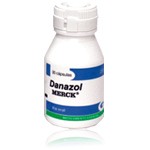Understanding and Managing Premenstrual Syndrome


Premenstrual syndrome (PMS) is a complex condition that affects many women of reproductive age in the days leading up to their menstrual period. It encompasses a broad range of physical, emotional, and behavioral symptoms that occur cyclically in alignment with the menstrual cycle. While some women experience only mild discomfort, others may find their daily functioning disrupted by the intensity of the symptoms. This article offers a detailed look at the causes, common manifestations, strategies for prevention, and treatment approaches, including the role of the medication Danocrine in managing severe cases.
Understanding the Cause of Premenstrual Syndrome
PMS is believed to result primarily from the hormonal fluctuations that occur during the menstrual cycle, particularly in the luteal phase — the period between ovulation and menstruation.Estrogen and progesterone levels rise and fall during this time, and these hormonal changes can affect neurotransmitters in the brain, particularly serotonin, which plays a key role in mood regulation.
Although hormonal changes are a central factor, they do not act in isolation. Neurochemical changes, including altered levels of endorphins and other mood-related chemicals, can contribute to the emotional symptoms often seen with PMS. Additionally, some women may have a heightened sensitivity to these normal hormonal changes, which might explain why not all women experience PMS with the same severity.
Genetics, lifestyle, diet, stress levels, and underlying health conditions may also influence the development and intensity of PMS. Nutrient deficiencies, such as low levels of magnesium, calcium, or vitamin B6, may exacerbate symptoms, while stress and poor sleep can amplify mood-related disturbances.
Common Symptoms of Premenstrual Syndrome
PMS can manifest in a variety of ways, but four of the most common and noticeable symptoms are mood swings, bloating, breast tenderness, and irritability.
Mood swings often include feelings of sadness, anxiety, or increased emotional sensitivity. Women may feel unusually tearful, frustrated, or overwhelmed by minor inconveniences, a stark contrast to their emotional state during other parts of the month.
Bloating is another frequent complaint, caused by fluid retention and gastrointestinal changes. This uncomfortable sensation can contribute to a general sense of sluggishness and discomfort.
Breast tenderness, which often includes swelling and heightened sensitivity, is linked to hormonal changes that affect the breast tissue.
Irritability can be a hallmark symptom, where minor frustrations lead to exaggerated emotional responses. This can strain personal and professional relationships, especially if those around the individual are unaware of the hormonal basis for the behavioral changes.
While these symptoms are typical, PMS is highly individualized. Some women may experience headaches, joint or muscle pain, changes in appetite, fatigue, insomnia, or acne, among other issues. The key characteristic is that the symptoms are cyclical, appearing a few days to two weeks before menstruation and resolving shortly after the period begins.
When Do Premenstrual Symptoms Start?
PMS symptoms typically begin during the luteal phase of the menstrual cycle, which starts after ovulation and lasts until menstruation begins. This phase usually spans about 14 days, although the duration can vary depending on individual cycle lengths. Most women begin noticing symptoms about 5 to 10 days before their period starts.
For some, the symptoms are barely noticeable and may last only a day or two. For others, the symptoms can begin shortly after ovulation and intensify as menstruation approaches. The symptoms usually resolve within a day or two of the start of the menstrual bleeding, marking the transition into the follicular phase, where hormonal levels stabilize and return to baseline.
In more severe forms of PMS, such as premenstrual dysphoric disorder (PMDD), symptoms can be debilitating and significantly impair a woman’s quality of life. These symptoms are not merely bothersome but can interfere with work, social relationships, and daily activities.
How to Avoid or Minimize PMS
While PMS may not be entirely avoidable due to its hormonal basis, various strategies can help minimize its effects. These include both lifestyle changes and medical interventions.
Maintaining a healthy diet that is low in refined sugars and saturated fats and rich in whole grains, lean proteins, fruits, and vegetables can help balance blood sugar and reduce bloating and fatigue. Reducing sodium intake may also help prevent water retention and swelling.
Regular physical activity, such as aerobic exercise or yoga, has been shown to alleviate PMS symptoms by improving mood, enhancing sleep, and reducing stress. Exercise stimulates the release of endorphins, which act as natural mood elevators and painkillers.
Managing stress through relaxation techniques such as meditation, deep breathing exercises, or mindfulness can make a significant difference. High stress levels can worsen both physical and emotional symptoms, so building resilience through mental health practices is beneficial.
Ensuring adequate sleep each night can help the body regulate hormones more effectively. Sleep deprivation can exacerbate mood swings, fatigue, and irritability.
Some women find relief through dietary supplements such as calcium, magnesium, vitamin B6, or evening primrose oil, although these should be taken under the guidance of a healthcare provider. Hormonal contraceptives are sometimes prescribed to help regulate the menstrual cycle and reduce PMS symptoms, although their effectiveness varies from person to person.
In cases where emotional symptoms dominate and interfere with daily functioning, selective serotonin reuptake inhibitors (SSRIs) may be prescribed during the luteal phase or throughout the cycle. These medications can help stabilize mood and ease depressive or anxious feelings associated with PMS.
The Role of Danocrine in the Treatment of PMS
Danocrine, also known by its generic name danazol, is a synthetic androgen used in certain gynecological conditions, including endometriosis and severe cases of premenstrual syndrome. While not commonly a first-line treatment for PMS, it can be considered in cases where other interventions have failed, particularly when the symptoms are hormone-driven and resistant to conventional therapy.
Danocrine works by suppressing the mid-cycle surge of luteinizing hormone (LH) and follicle-stimulating hormone (FSH), effectively halting ovulation. This reduction in hormonal cycling leads to decreased production of estrogen and progesterone — the hormones believed to drive the symptoms of PMS. By stabilizing hormone levels, Danocrine can mitigate many of the physical and emotional fluctuations associated with the condition.
However, Danocrine is not without side effects, and its use must be carefully weighed against potential risks. Because it is a weak male hormone, some women may experience androgenic side effects such as weight gain, acne, oily skin, or voice deepening. Liver function must be monitored, as the medication can affect liver enzymes. Long-term use is generally avoided, and the drug is prescribed under strict medical supervision.
Despite these concerns, Danocrine can be effective in reducing severe breast pain, mood symptoms, and other manifestations of refractory PMS. It is typically reserved for cases where standard treatments — such as SSRIs, oral contraceptives, and lifestyle modifications — do not provide adequate relief.
Danocrine may also be used in conjunction with other therapies, especially when the clinical picture is complicated by coexisting conditions like endometriosis, where it can provide dual benefits. Its ability to suppress ovarian hormone production makes it a potent option for controlling hormone-related symptoms.
Before initiating treatment with Danocrine, a thorough evaluation is essential. The healthcare provider will consider the severity and pattern of symptoms, the patient’s reproductive goals, medical history, and previous treatment responses. Because the medication can affect menstrual patterns and fertility, it is not typically recommended for women trying to conceive.
Final Thoughts
Premenstrual syndrome is a multifaceted condition with both hormonal and lifestyle components. Although it is a common experience for many women, the severity and specific symptoms can vary widely. Understanding the hormonal basis of PMS can guide effective strategies for relief — from simple lifestyle changes to more intensive medical treatments.
While most women find symptom control through diet, exercise, stress management, and possibly hormonal contraceptives or SSRIs, some may require stronger interventions. Danocrine offers a therapeutic option for severe or treatment-resistant PMS, particularly in cases where hormonal fluctuations play a central role.
By working closely with healthcare providers and adopting a personalized approach, women suffering from PMS can find strategies that significantly reduce their symptoms and improve their quality of life. Ongoing research continues to explore new treatment avenues, offering hope for more targeted and well-tolerated solutions in the future.
Medically Reviewed by Dr. Faride Ramos, MD
(Updated at Jul 26 / 2025)

